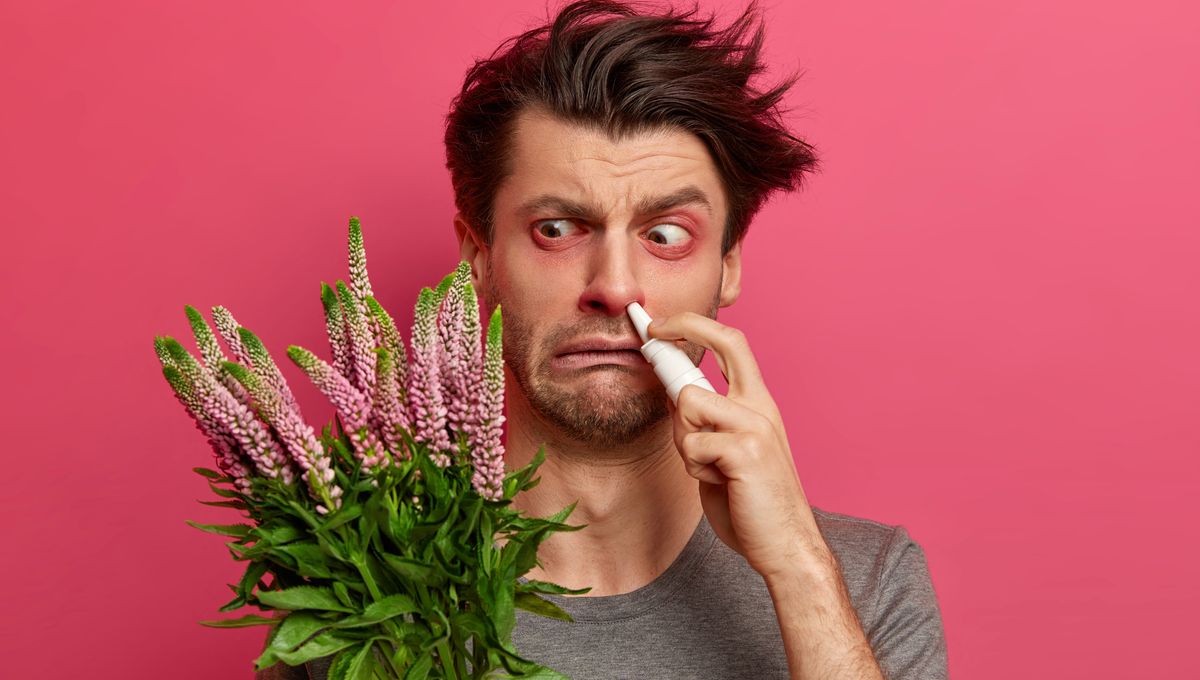
Summer is on its way, and as those with annual hay fever across the land reach for their antihistamines and tissue supplies, parts of the world may also experience “pollen bombs” that make their symptoms even worse. But there is also a lesser-known form of allergy that may add to some people’s frustrations.
Pollen food syndrome, sometimes known as “oral allergy syndrome”, is a common medical condition where a person experiences allergic symptoms in their lips, mouth, and throat soon after eating raw fruit or vegetables – usually within 10 minutes. In most cases, the symptoms are mild and include itching or tingling sensations, but there can also be some swelling too. In some cases, people will notice the onset of symptoms from food preparation alone, which is caused by food particles in the air that are inhaled and trigger sneezing, eye irritation, and running noses. Peeling fruits and vegetables may also trigger some skin irritation in some people.
In rare situations, symptoms can include vomiting and nausea as well as problems swallowing and breathing. If such symptoms occur, an individual should seek immediate medical help.
The condition is thought to affect around 2 percent of the British population and possibly as high as 10 percent of Americans.
It tends to occur in people with seasonal hay fever and pollen allergies, though this is not always the case. This is because the proteins in these allergens are similar to those found in raw fruits and vegetables, as well as soya, peanuts, and tree nuts. These similarities confuse our immune systems as Dr Sabah Salman, a GP at LloydsPharmacy Online Doctor, explained in a statement sent to IFLScience: “Your immune system doesn’t always recognize the difference between the pollen you breathe in from things like trees, and the pollen structure in the plant based foods you eat.”
“Essentially, pollen food syndrome results when the immune system recognizes the food protein you eat as an allergen and creates an allergic reaction, resulting in similar symptoms to hay fever.”
In most cases, the symptoms of pollen food syndrome will settle down within an hour or so without further treatment. Obviously, the most important step is to avoid the source of the allergens, so stop eating the causative food and drink water to help your body recover. You can also take antihistamines if the symptoms are more unpleasant.
“If you have taken an antihistamine but your symptoms are not improving”, Salman added, “you should seek medical advice. If you have a food allergic reaction which affects your breathing or circulation, for example, causing faintness, do not rely on antihistamines or an asthma inhaler. Instead, speak to a medical provider urgently”.
It is important to remember that not all versions of the triggering food will produce an allergic response. Once food has been cooked or if it has been stored in a can, the allergens will have been denatured and should not cause any issues. So this means that allergens contained in soup may not produce any symptoms, but vegetables lightly cooked in a frying pan for a stir-fry may still be a problem.
“If you experience symptoms of pollen food syndrome”, Salman concluded, “you should book a doctor’s appointment. Often, pollen food syndrome can be diagnosed without further testing. However, you may be referred to have a blood test or skin prick testing to confirm a diagnosis.”
The content of this article is not intended to be a substitute for professional medical advice, diagnosis, or treatment. Always seek the advice of qualified health providers with questions you may have regarding medical conditions.
All “explainer” articles are confirmed by fact checkers to be correct at time of publishing. Text, images, and links may be edited, removed, or added to at a later date to keep information current.
Source Link: Hay Fever Is Widespread, But Do You Know About Pollen Food Syndrome?